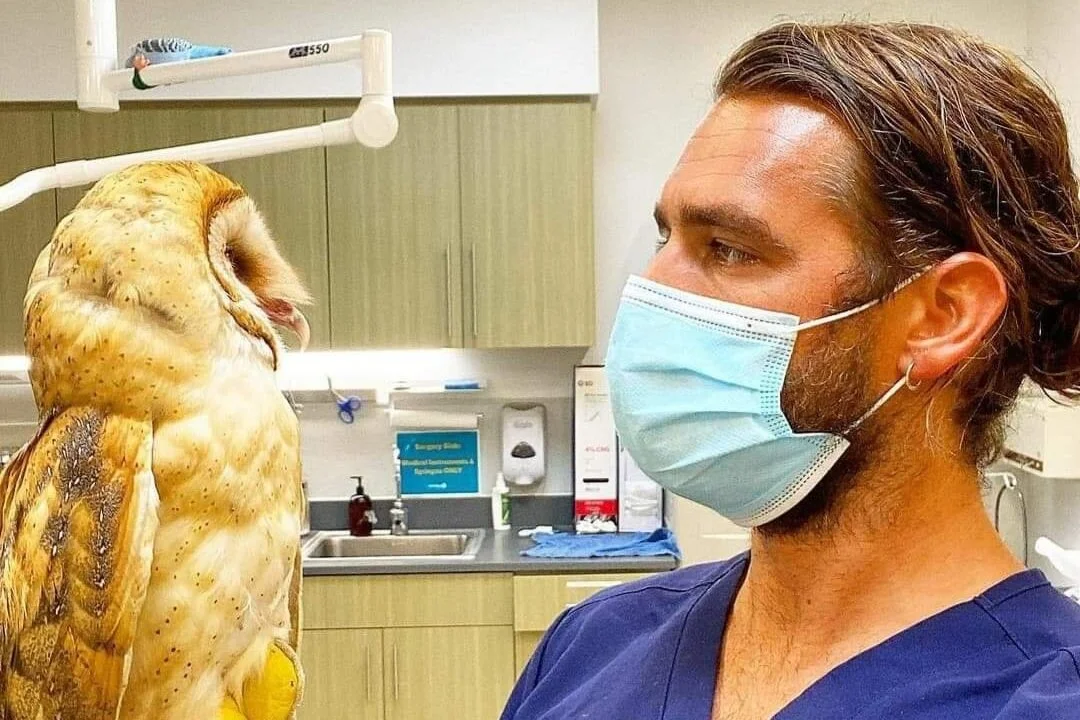Want to see the Vet Talk article before anyone else? Sign up for the newsletter to see the monthly articles!
Hello, fellow wildlife enthusiasts! It is my pleasure to write to you in the Swampin Newsletter and to share some of my own experiences and passions regarding wildlife with all of you. I hope you find these articles interesting and informative! As we are in Winter now (yes, we do get Winter in California!) I have definitely seen an increase in non-target wildlife presenting to the hospital with issues related to commercial rodent controls; glue-traps, snap-traps, and rodenticide poisoning. The glue-trap and snap-trap patients while heartbreaking are often more straightforward to manage when compared to the rodenticide patients as these animals require further diagnostics and interventions. Today I’ll be discussing the effects that rat poisons have on free-ranging raptors.
We know that rat poison (rodenticide) is widely used to kill unwanted rodents, but many non-target species also sicken and die as a result of these rodent baits. Raptors in urban environments are highly vulnerable to rodenticides as they prey heavily on rodents, and a rat that is poison-laden and stumbling around outside makes for an easy target for a hungry Barn Owl.
There are a TON of commercially available rodenticides; by far the most common is the anticoagulant rodenticides (AR) which cause the animal to bleed to death internally, externally, or a combination of both. Essentially these anticoagulants prevent Vitamin K from being utilized by the liver, which makes blood clotting factors. Once these stores run out, blood will not clot normally. In a healthy animal, a simple bruise would resolve in a matter of hours or days, but in animals with AR toxicosis the animal is unable to properly cease the bleeding and may eventually die due to blood loss.
The clinical signs often associated with raptors and AR toxicosis are severe lethargy, spontaneous bruising with no signs of trauma and pale mucous membranes; overall ADR (Ain’t Doing Right). By the time these critters are found in the field and transported to a wildlife hospital they are often in dire straights and need aggressive care to get them back on track. Vitamin K1 therapy is initiated and may require weeks to months of treatment. For the severely anemic bird, an intraosseous catheter is placed and blood or plasma will be transfused to restore blood volume and provide immediate stores of healthy clotting factors and blood proteins. We call these “Hail-Mary” cases since we really throw everything we’ve got at saving these critters! Generally, if the bird survives the first couple of days of therapy, it has a very good prognosis for release, and that is always the goal of wildlife care facilities.
We will never get rid of unwanted rodents nor is there a permanent method for keeping them away. In this humble veterinarians’ opinion, the perfect rodent control looks like a hawk or owl! We can do much better in protecting our castles by identifying and securing areas where rodents might enter the home or office. Eliminating possible sources of food, shelter, and water for unwanted rodents can dramatically affect their noticeable presence in the home.
As stewards to the natural world, each of us has the capacity to care for what really benefits wildlife. And what benefits wildlife benefits us all!
Andrew Y. Kushnir DVM



